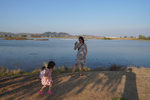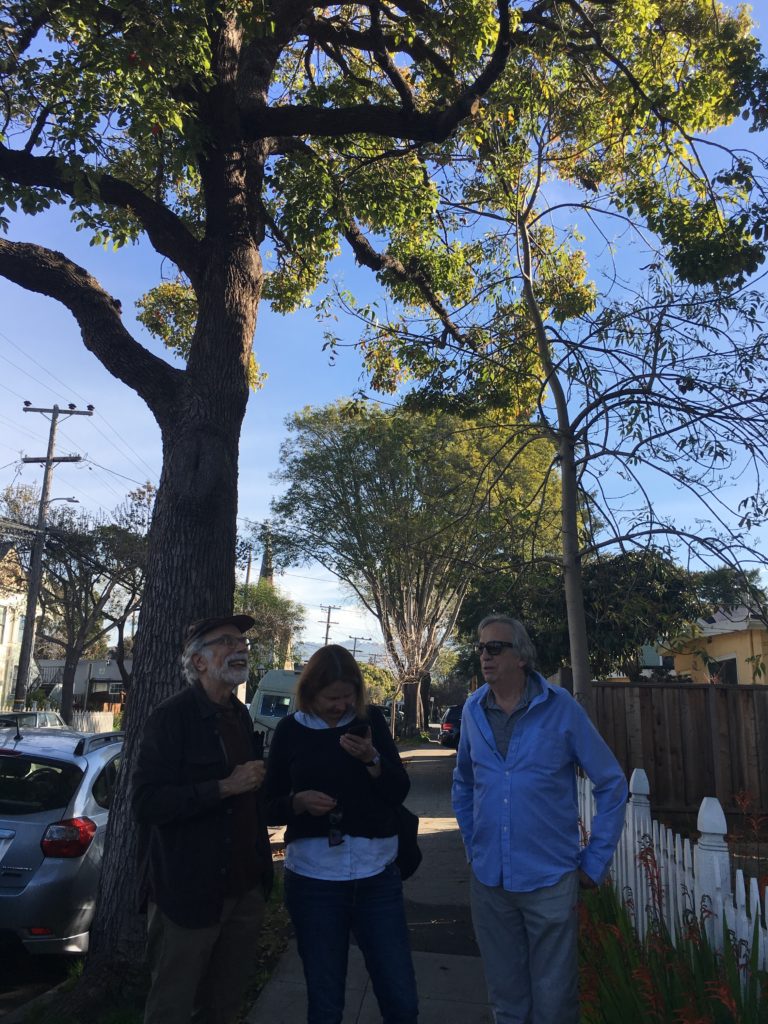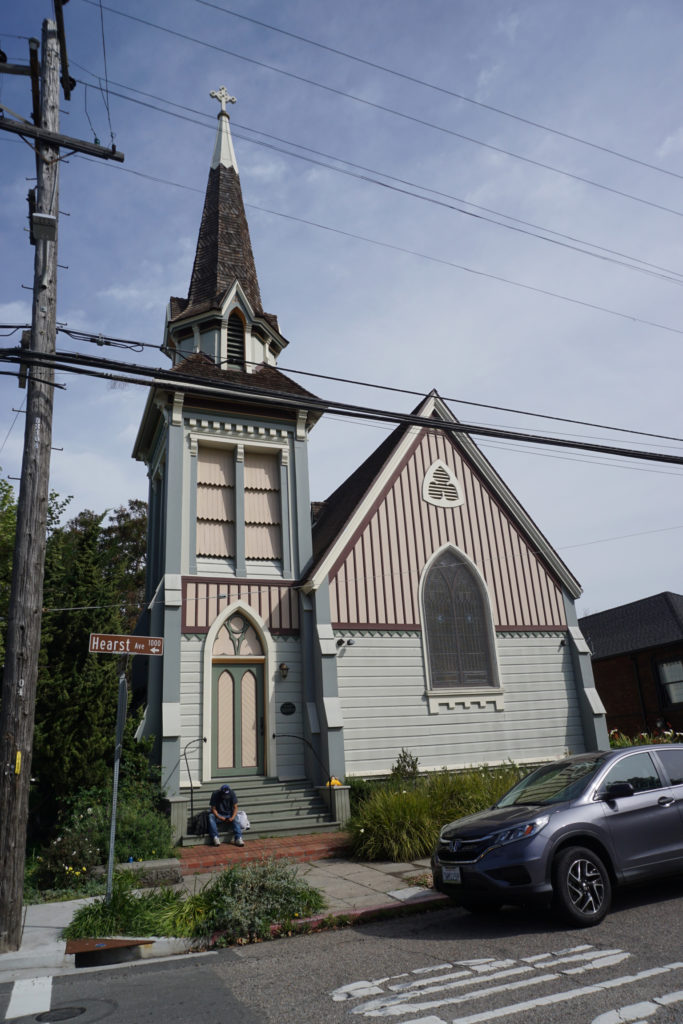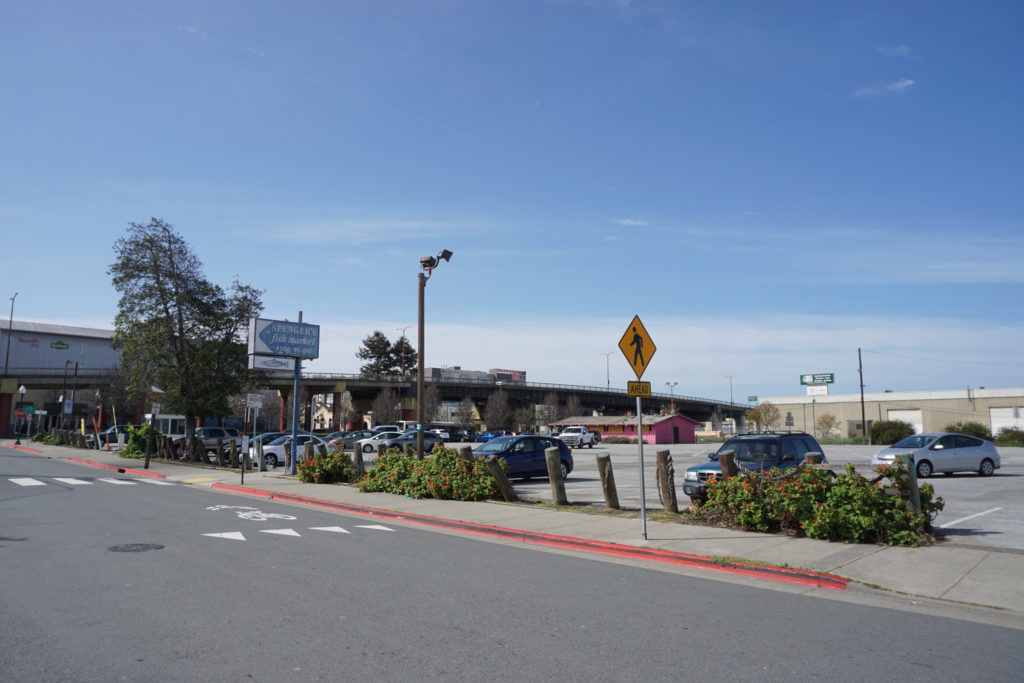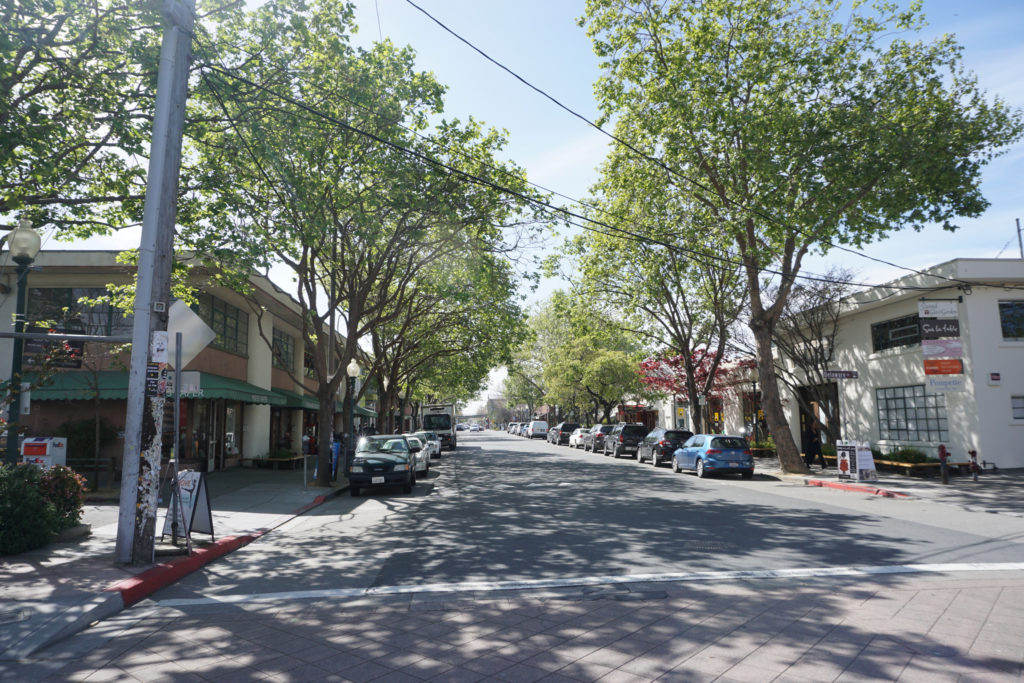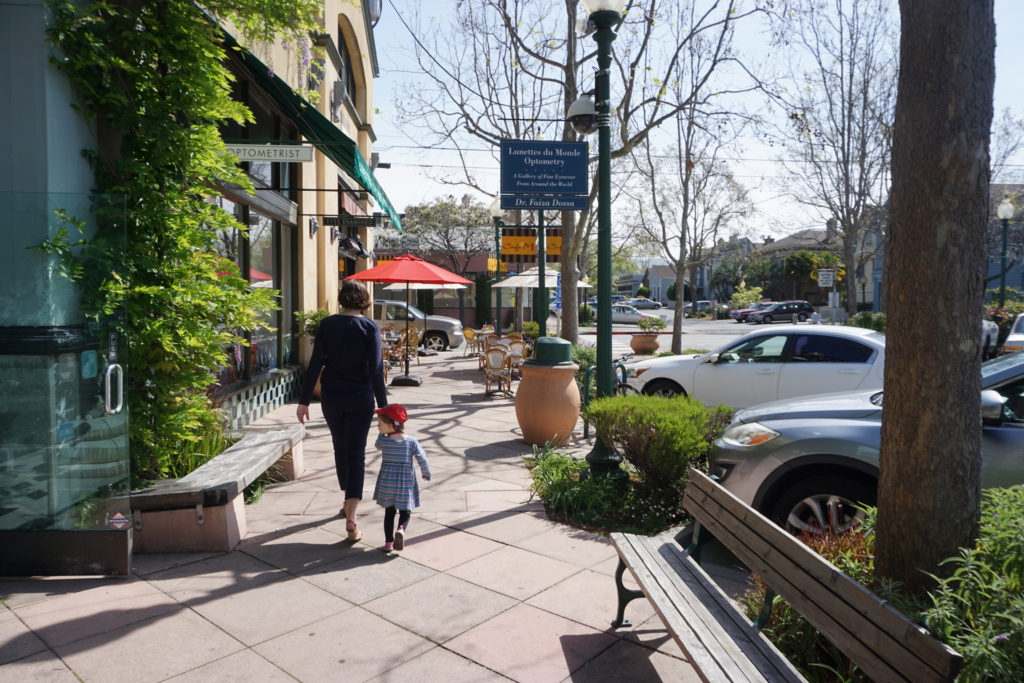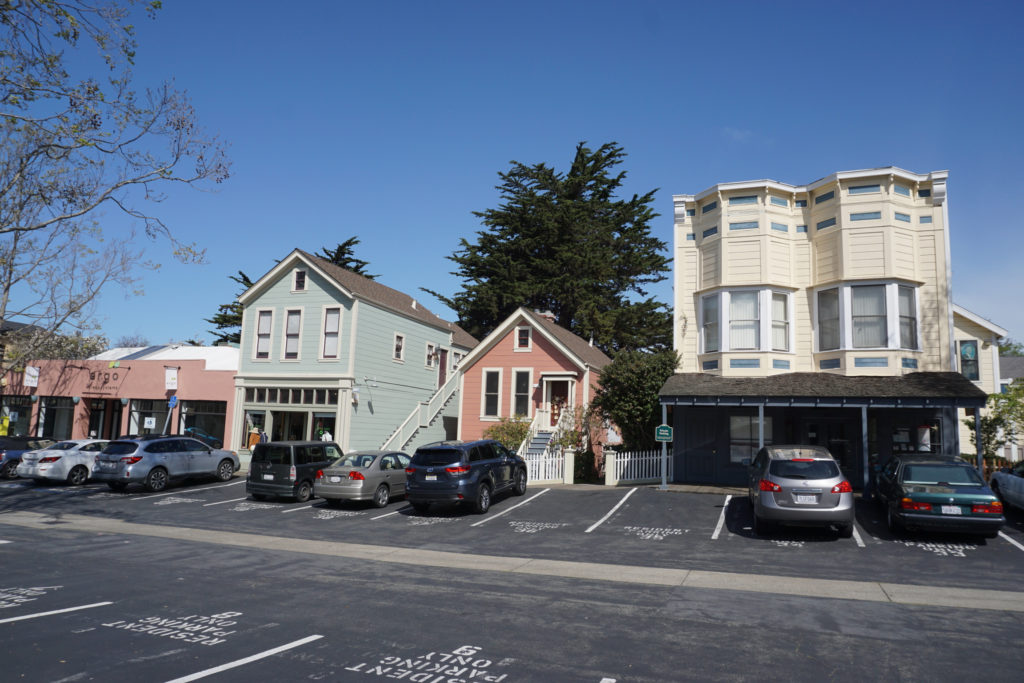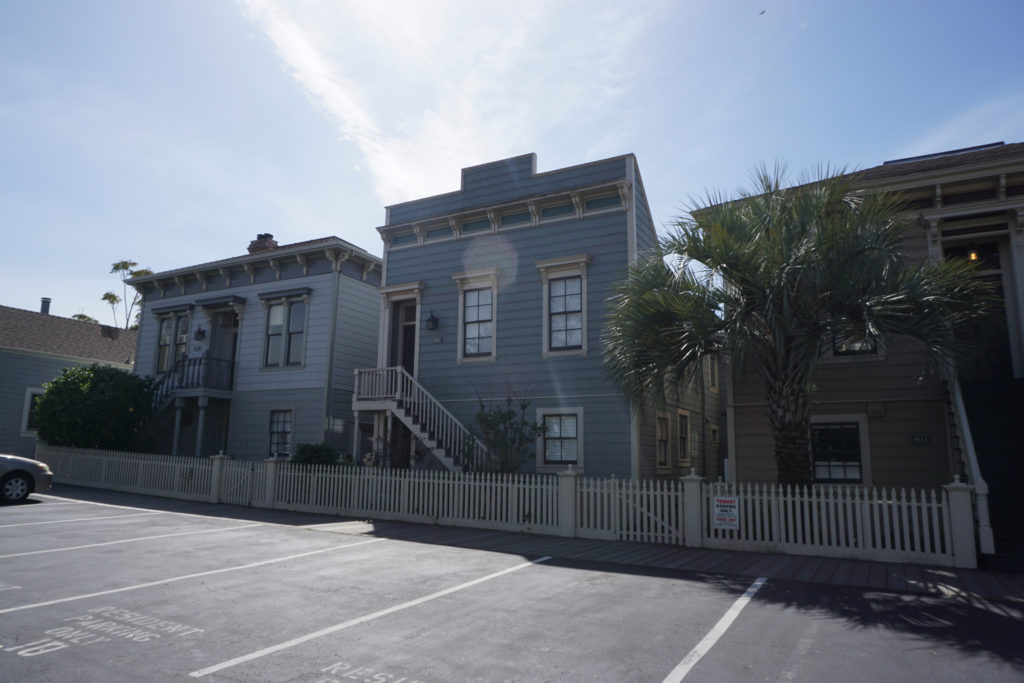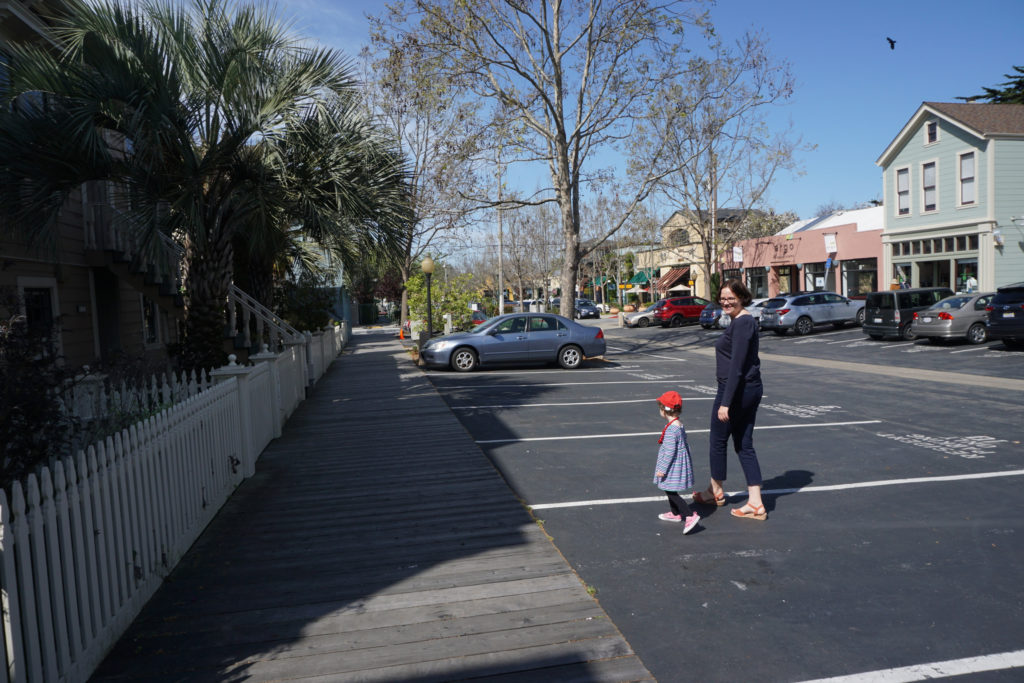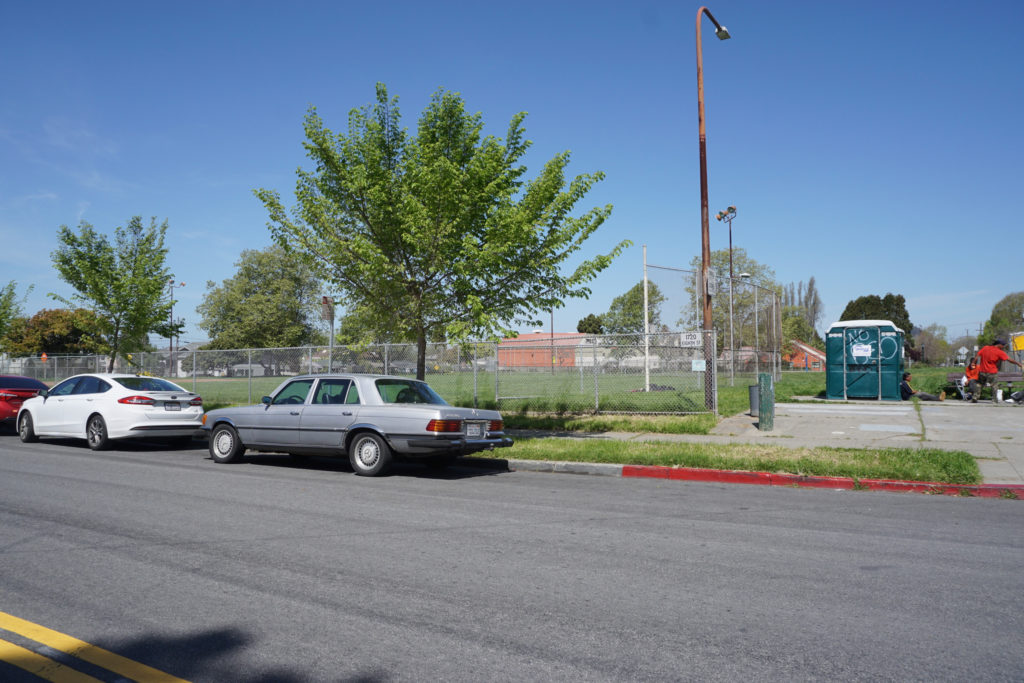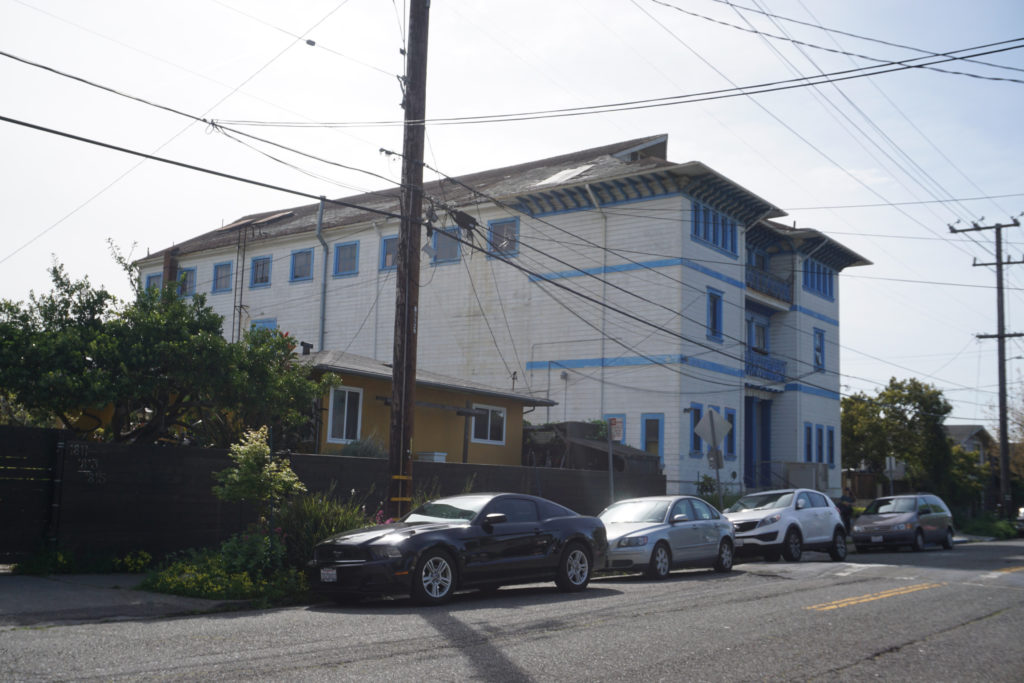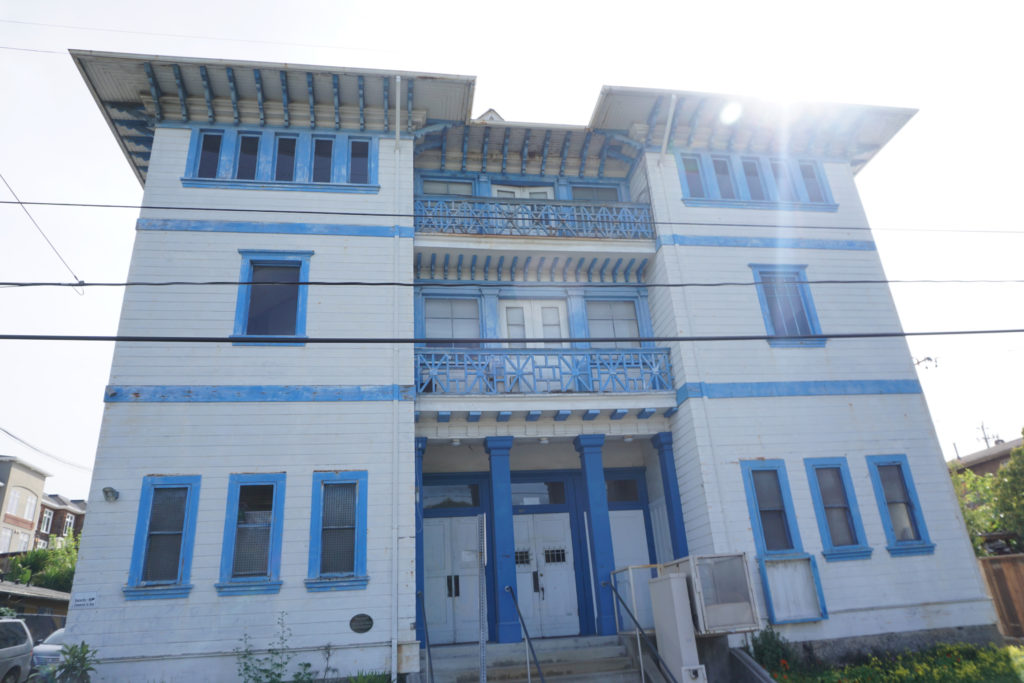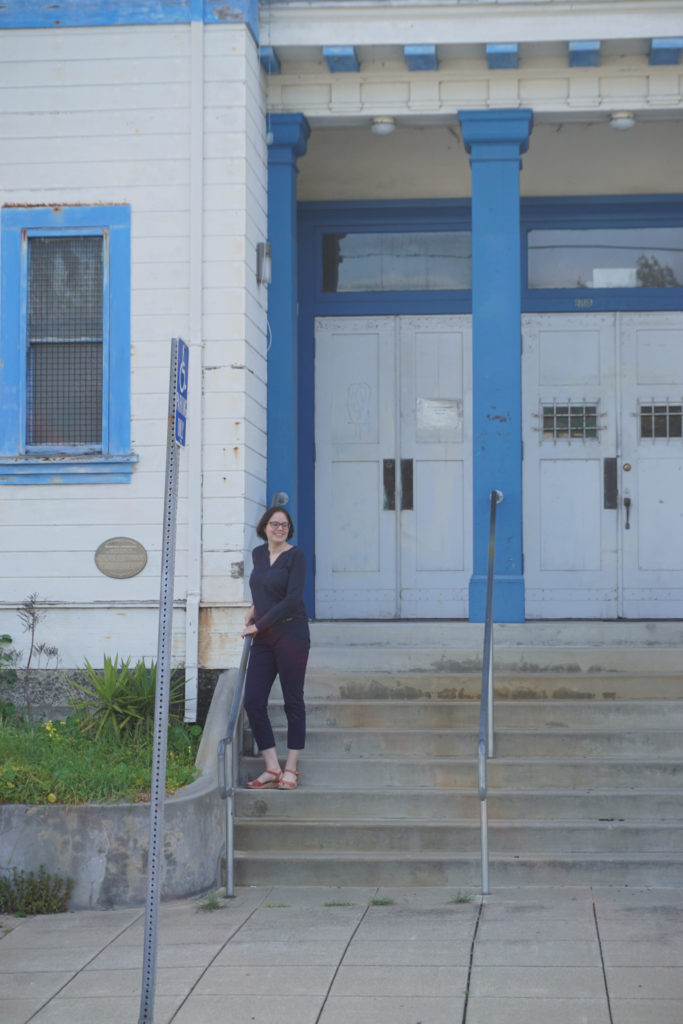I finally managed to record the path of interesting historical places, selected for me and my Mom, by the members of Berkeley Historical Plaque Project. We took the walk back in February.
I have been volunteering for this noble project for the past two years. Its aim is to care for the memory of historic buildings or residents significant to Berkeley: architects, musicians, painters, artists, professors and public personalities. My task is to add new notes to the website and manage our Facebook page. I am also a co-author of the biographical note (e-plaque) about a long-term resident of Berkeley, Czesław Miłosz, Polish Nobel-Prize in Literature laureate. Little Maya was also present on the walk. We repeated the route with Rose and Dean a couple of months later.
Meeting point: 9th Street – The Church of the Good Shepard
We started the walk from the oldest (Episcopal), neo-Gothic, wooden, church in Berkeley, the Church of the Good Shepard. Built at the end of the 19th century, it has been neatly renovated.
In contrast, just at the church on the lawn we saw several men speaking Spanish. They ate some breakfast, drank some beer. Not far from the church there is a pick up point for day laborers. At the church, we showed my mother a green, oval plaque, installed by the Berkeley Historical Plaque Project. One can read from it that at the end of the 19th century, before the invention of electricity, the church bell served as a fire alarm. We could not get inside the church. We would have to come during mass. The Church of the Good Shepard is featured on the National List of Historic Places and is a City of Berkeley Landmark.
Exclusive boutiques, furniture and … Berkeley’s “4th Street”
We then headed towards 4th Street. It is quite a large street filled with both smaller and larger stores. There are exclusive Turkish towels, cheaper clothes from Nepal, kitchen accessories, artisan coffee at Artiś (try it Californian style : with an avocado toast). There is an Apple store for Dean, a yoga studio for me (nice memories of my prenatal yoga), an Ice Cream place for Rose, and a Toy Store for Maya. There is a hairdresser and a few good restaurants. For children, there is even a train passing behind the shops. Often we see a fire truck parked on the street while Firefighters get their morning coffee. We do not often journey outside of Berkeley, so fourth street is a our substitute for a big city.
Fourth Street has seasonal activities. We celebrated New Year’s Eve in the newly open fancy Pompette restaurant. Every year, trees are decorated for the holiday season. There are various attractions to attract customers, such us the Chinese New Year parade, or the 4th of July fair.
There is also a large open parking for customers. Thanks to our notorious guides, we learned that a long time ago instead of cars, one could see huge piles of shells and ashes.
It turns out, that thousands of years ago native Indians lived there. They fed on clams, oysters and other shellfish. In the mid-twentieth century, these stacks were, in some places, as tall as 18 meters high and and wide as 82 meters. When this place was liquidated, the shells were utilized for building streets . Maybe even in our backyard, there are thousand years old shells buried. Our guides complained that the place was not completely scavenged. Who knows what still lies hidden underneath?
The beginnings of Berkeley- 5th Steet – the first settlement, Delaware Street Historic District.
Our entire route borders the San Francisco Bay. That is why the first settlement of Berkeley was called the Ocean View (from the stop for stagecoaches, from which you could see the ocean). In the mid-nineteenth century, more and more gold seekers were coming here. This settlement quickly developed and was absorbed into the city of Berkeley.
In the late 1960s, this part of Berkeley was to be rebuilt into a business area. Local residents opposed and thanks to their protests, Victorian homes from Delaware Street have been preserved. Some have been moved to another location. Interestingly, plans for gentrification (word not always liked in Berkeley) had to wait. The image of protesting Berkeley students do not go hand in hand with business.
The houses are now repainted. Apparently, one of the owners did not want it to have a green plaque on it confirming the history of the place. The small square is renovated. There is a spa, parking, a good-sized place for rent. It is rather empty and quiet.
And up from the water again …. 7th Street.
Before reaching our final destination, we stopped by the park, where the famous American baseball player and manager Billy Martin started to practice. I confessed that I did not recognize him. The guides were not offended and proceeded with the walk. From behind the roofs of the houses, I saw the tower of the Good Shepard church.
Maya has had enough of strolling- 10th Street – Finnish immigration in Berkeley
The final stop was an amazing building from the early twentieth century, built by Finnish immigrants: Toverii Tupp: Finnish Hall. Today, it sticks out a bit from the rest of the houses on the same street. The time seemed to stall here. On the façade, we quickly found a green plaque with a description of the building’s history. You can learn from it that the architecture of the building incorporates Finnish, but also local American traditions. The Hall served as the meeting house for the Finns, but in the 1930s, for ideological reasons, the Finns had a quarrel and some of them built their own separate meeting place on the same street.
The walk turned out great (thank you Robert and Carl!). My mother only regretted that my dad could not make it, because he was back in Poland.
Now, how about visiting the Berkeley Historical Plaque Project or following us on Facebook?
